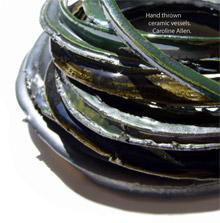Anne Lehoerff (University of Lille)
Around 1100 BC, between Normandy and Paris, a craftsman fashioned a metal helmet known as a ‘crested helmet’ destined to become quite famous. Appearing repeatedly in paintings of the late 19th and 20th centuries in different guises, it came to represent the archetypal ‘Gallic’ helmet, an anachronism of nearly thousand years.
Dating in fact to the Bronze Age, this helmet is however quite real. It consists of a double cap held together by a mixed system of folding and riveting in which the conical rivets play a dual role, as fastenings and as decoration. Furthermore, those rivets are neither the same colour nor the product of the same manufacturing method as that used for the main body of the helmet (made with metal sheets). Visual examination and laboratory analysis reveal two distinct alloys and techniques. The helmet was thus bicoloured, with a yellow-orange cap and pale yellow rivets. The corrosion of time and uniform green colour of today hardly do justice to choices of the craftsman. But precisely what choices did the craftsman have, in this particular case and more widely during the European Bronze Age? What were the restrictions imposed by this material ‘metal’ and how could a metalworker accommodate them in his work? All alloys do not behave in the same way; colour and form can be very varied according to the limits of the material but also the expertise of a particular craftsman. The bicoloured late Bronze Age helmet shows that here the craftsman has experimented with these constraints for a specific result which balanced aesthetics (form, colour) and functionality (a metal sheet adapted for a protection of the head). Is this the epitome of ‘creativity‘ 3,000 years ago?
Using examples from the European Bronze Age, this paper will focus on highlighting the existence of a subtle balance of conscious choices between material, function, morphology and quality in copper alloy production. Different theoretical diagrams will be presented according to the type of object, personal choices and the priorities of those involved, giving full meaning to the term ‘creativity’ at the heart of European societies of the Bronze Age.


